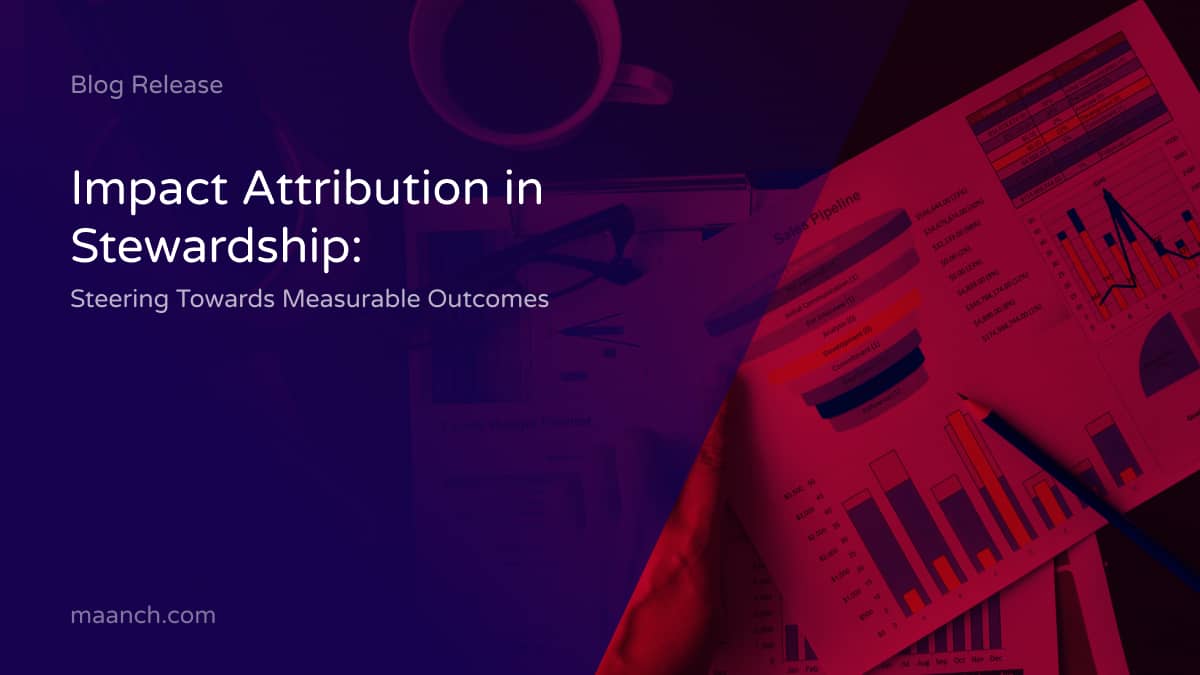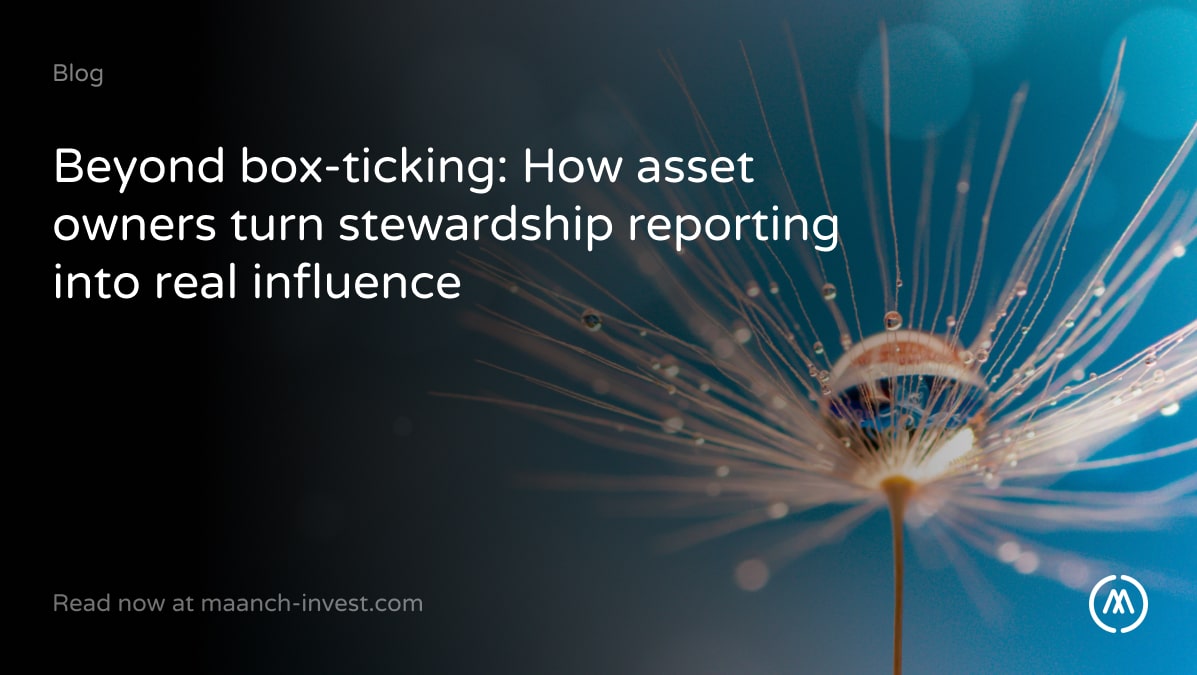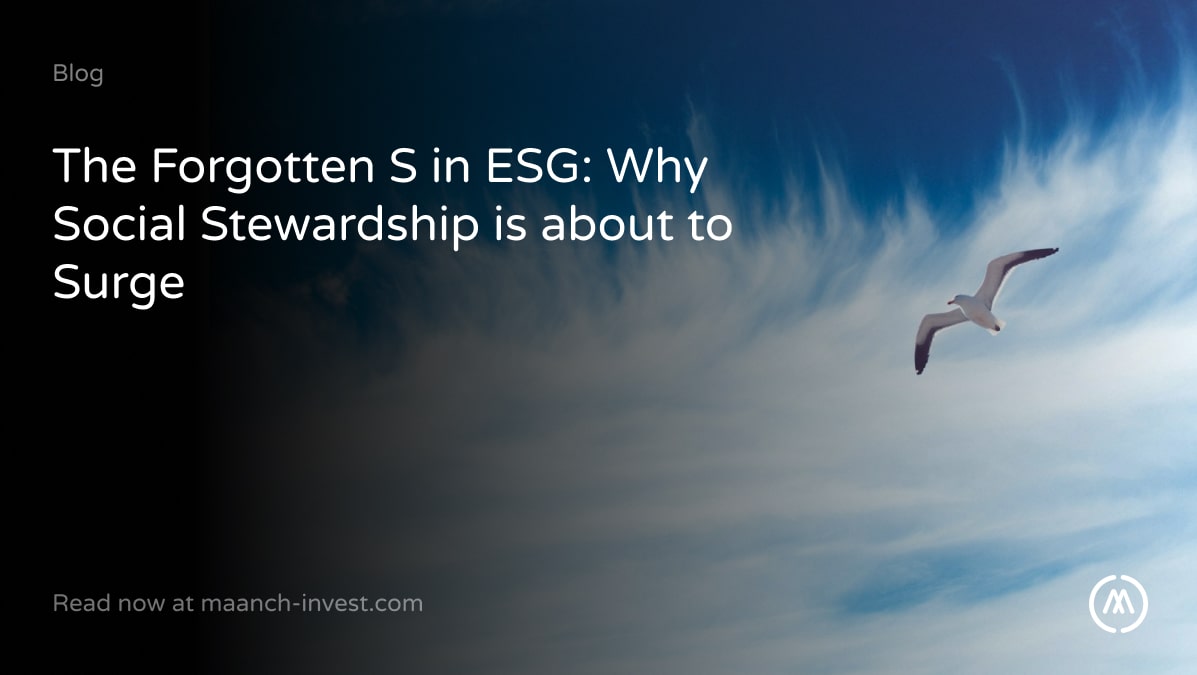In the realm of sustainable investing, impact attribution in stewardship is pivotal, steering us towards measurable outcomes. Stewardship, the strategic management of investments to foster long-term value, is increasingly critical in today’s financial landscape. This shift underscores the growing emphasis on sustainability and Environmental, Social, and Governance (ESG) considerations. However, accurately measuring the impact of stewardship activities and attributing specific outcomes to these actions presents a significant challenge, spotlighting the need for robust methodologies and transparent reporting in the investment community.
Key Challenges in Impact Attribution:
The complexity arises primarily from the indirect nature of influence that investment teams hold over investee companies. While they play a crucial role in guiding and advising, the direct control over outcomes often remains out of reach. This indirect influence complicates the task of linking stewardship actions directly to tangible outcomes, a fundamental challenge for those in the field striving for accountability and measurable results.
- Long-term Horizon: Sustainable investing goals, like environmental preservation and social justice, unfold over time. This delays the materialisation of impacts and complicates measurement.
- Complexity of Stewardship Activities: Engagements on strategy, governance, and ESG issues add layers of complexity to attributing specific outcomes.
- External Factors: Company performance is influenced by a wide range of external variables, including market fluctuations and regulatory changes, obscuring stewardship’s effects.
- Dynamic ESG Criteria: The evolving nature of sustainability and ESG considerations further complicates standardised measurement.
- Qualitative Impact: Measuring and attributing the qualitative aspects of stewardship, such as improved governance or sustainability practices, presents its own set of challenges.
- Diverse Approaches: The variety of stewardship approaches necessitates bespoke methods for measuring impact, with no one-size-fits-all solution.
Recognising these challenges marks the first step towards developing refined methods for accurately measuring and reporting the true influence of stewardship activities.
Overcoming Barriers to Effective Impact Attribution:
Accurately measuring and attributing the impact of stewardship faces several barriers, each requiring targeted strategies to overcome. Addressing barriers with specific, actionable strategies can enhance the precision and reliability of impact attribution. This paves the way for more accountable, transparent, and effective sustainable investing practices.
- Articulating Intentionality: Clearly defining the goals and intended outcomes of stewardship activities is crucial. Develop a stewardship statement outlining objectives and strategies, and make it publicly available to set clear expectations. Here is an example of an Engagement Blueprint by Schroders.
- Methodology Variations: Existing frameworks might not capture the full spectrum of stewardship impact. Adopting mixed-method approaches that combine quantitative and qualitative analyses can offer a more holistic view. Engaging with academic and research institutions for method development can enhance methodological rigour. Here is an example of Union Bancaire Privée collaboration with Cambridge Institute for Sustainability Leadership on Let’s Discuss Nature with Climate: Engagement Guide. The essential guide to portfolio client and investee company engagement on nature and climate.
- Foster Collaboration: Build partnerships across the investment chain to share data, insights, and strategies. Collaborative platforms can facilitate the exchange of best practices and innovative solutions. Here is a link to the UN PRI – Collaboration Platform.
- Pursue Standardisation: Support and contribute to the development of standardised reporting frameworks and metrics. Standardisation simplifies comparison and aggregation of data, making impact attribution more straightforward. Varied expectations and levels of understanding complicate impact attribution. Facilitating workshops and training sessions among investment teams to align perspectives and educate on the importance and process of impact measurement can bridge this gap.
- Commit to Continuous Improvement: Adopt a mindset of continuous learning and improvement. Regularly review and update stewardship strategies based on feedback and new insights to enhance their effectiveness.
The Future of Impact Attribution in Stewardship: A Closer Look
As we delve deeper into the future of stewardship, the horizon appears both promising and demanding. With the landscape continually reshaped by technological advancements and evolving investor expectations, let’s explore what lies ahead:
- Technological Integration: The role of technology is becoming increasingly significant. Technological advancement promises to revolutionise the way we track and evaluate stewardship activities. This will enable precise analytics, real-time tracking as well as enhanced reporting capabilities to cater to different clients and regulators.
- Evolving Investor Expectations: Investors are increasingly prioritising responsible investments, pushing stewardship to adapt by broadening the focus to encompass comprehensive ESG criteria. Aligning investment strategies with global sustainability goals, such as the United Nations Sustainable Development Goals (SDGs), Sustainable Finance Disclosure Regulation (SFDR), Global Reporting Initiative (GRI) etc.
- Enhanced Stakeholder Engagement: The future demands a collaborative effort involving multiple stakeholders. This collaborative approach will ensure achievement of thematic sustainability targets and mitigating systemic ESG Risks.
- Regulatory Evolution: As the demand for accountability grows, regulatory frameworks will support enhanced impact attribution, through mandatory disclosures related to stewardship activities.
Call to Action: Join the Conversation on Impactful Stewardship
At Maanch, we’re on a mission to deepen our understanding of impact attribution in stewardship and we want you to be a part of this journey. Your experiences, insights, and questions are invaluable to us and the wider community.
Research on Stewardship in Action:
We’re planning to delve deeper into real-world examples of successful stewardship. Are you aware of stewardship initiatives that have led to significant improvements in corporate behaviour, ESG performance, or financial returns?
Have you witnessed or been part of a stewardship initiative that led to tangible outcomes?
Share your experiences and insights with us – To learn more about our Stewardship Spotlight Series please email us.



